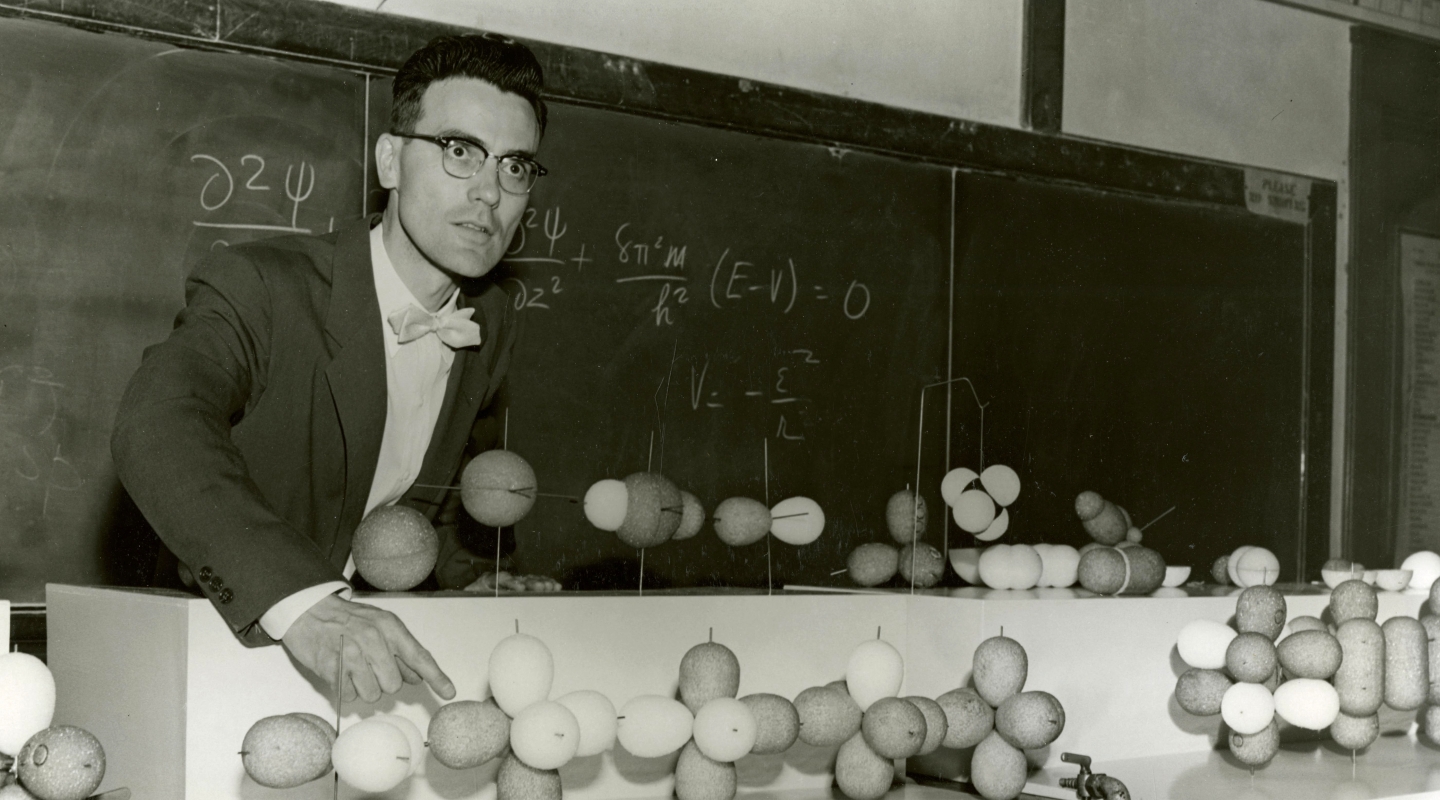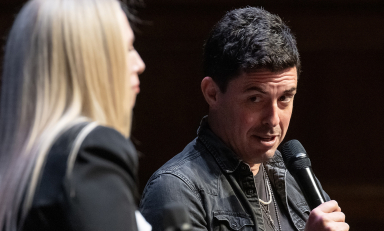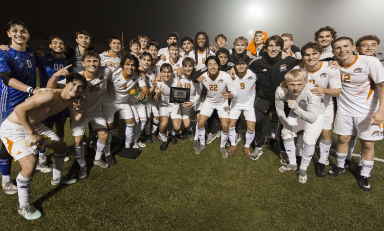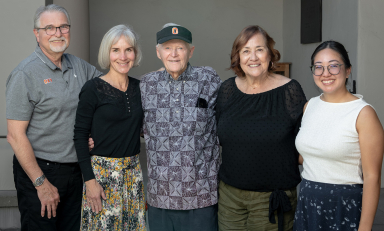Fifty-seven years after an ill-fated grade placed his academic dreams in jeopardy, Dr. Elliott Oppenheim ’69 recalls the counsel of his mentor, Professor of Chemistry Frank Lambert
I am at an age where I have elated on mountain tops and groveled in murky swamps and ambled through brambles in the tricky valleys as well as thickets of downed timber. Occidental College and Frank Lambert—a name synonymous with organic chemistry students during his 33 years in the classroom—have been my guides throughout my journey.
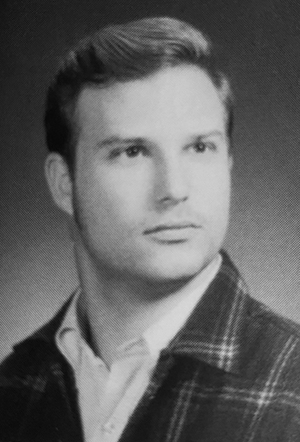
In September 1966, as a sophomore chemistry major at Occidental, my world revolved around becoming a doctor. I had my 2-S deferment—the Selective Service act protecting college students from the draft while in good standing—so I was safe from the killing fields of Vietnam for the time being.
But Vietnam was not my first and most immediate fear. It was Morrison and Boyd’s Organic Chemistry, a weighty green tome and a mainstay of second-year college chemistry coursework. I’d gotten accustomed to getting good grades and so much of organic seemed absolutely straightforward until we hit the Markovnikov Addition, aka Markovnikov’s Rule.
Formulated by Vladimir Vasilyevich Markovnikov in 1869 and used to this day, the Rule governs where electrons go around the carbon atom as our universe creates life. It states that a protic acid (a plus +) will add to an alkene (a negative -) such that the proton will bond to the less substituted carbon. Morrison and Boyd cite the King James Bible as a metaphor to Markovnikov’s Rule: “Unto everyone that hath shall be given” (Matthew 25:29). What part of that impenetrable gibberish did I not understand?
Dr. Lambert wrote the Rule on the blackboard in our Norris Hall classroom, drawing it out so that even a caveman would understand it: Markovnikov and anti-Markovnikov additions of HBr to 1-methylcyclohexene. He filled up four blackboards, which I diligently copied, not realizing that it made no sense to me until I looked at my grade in my first Organic Chemistry test in early September 1966.
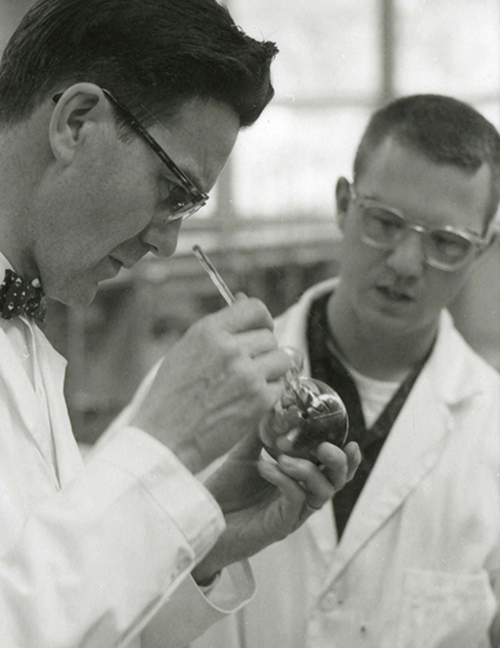
Through myopic eyes I squinted at the grade—the first D of my academic career—and on the paper, in his small No. 2 yellow Ticonderoga pencil writing, Dr. Lambert wrote, “Please see me.”
Until this test, I’d always done at least OK. As a student, I had to work really hard to understand anything. I spent my weekends cloistered in Braun Hall’s cinder block study dungeons. I regarded my getting into Occidental as an act of academic charity; compared to my college peers who were all-everything, who won all those academic prizes and distinctions, I was better suited for tending the rose gardens in the Quad.
This D rattled me. It fractured my dreams. It reinforced my father’s critique after my freshman year at Oxy, when I returned home to Levittown, Pa., for a summer of lifeguarding all day and then loading trucks for the U.S. Postal Service until midnight. My dad looked at my grades, which weren’t bad, but weren’t quite good enough in his eyes. “It’s hard getting into medical school. You may have to think about something else besides medical school,” he sighed, disappointed.
In the summer of 1966, before I returned to Oxy for my sophomore year, the United States targeted Hanoi and Haiphong and President Lyndon B. Johnson was sending more troops to the region. If I didn’t do well in organic chemistry, the gold standard for medical school admission, I was going to join many of my high school classmates in a rice paddy. And forget about becoming a physician. Soon enough, I’d be back in Fairless Hills, Pa., shoveling out slag beneath a cooled U.S. Steel blast furnace.
As I stared at my Organic Chemistry paper, the failure was such a calamity. This D came so abruptly, so harshly, that after class I went to see Dr. Lambert wondering if he was going to kick me out the laboratory door and hand me an M-16 as I left.
He seemed so large, with great imposing bushy eyebrows, but there was kindness in his face. “Can you count to eight?” he asked me when we met in his second-floor office. (I smelled chlorine from the adjacent lab.)
“Yes, of course,” I replied, wondering what that had to do with unsymmetrically substituted alkenes. That was the problem. I’d missed the main point of organic chemistry.
“You just don’t understand what’s going on here with these electrons,” Dr. Lambert said with a smile. There are eight electrons in the outer shell of a carbon atom, he explained; if you add a molecule to the carbon atom, the other electrons don’t fit in the outer shell and have to “go somewhere.” In about 20 minutes he explained where the electrons went.
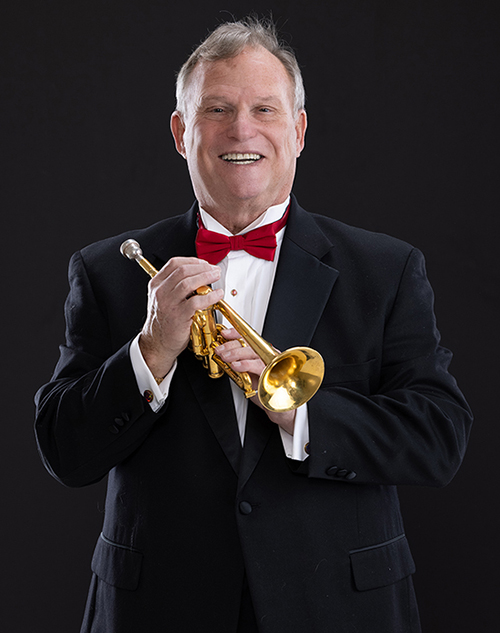
Dr. Lambert sensed how upset I was and reassured me, “You’re not going to Vietnam—you’re going to medical school.” He saw my promise and how motivated I was to heal and help people. He and his wife, Bunni, had no children of their own; his Oxy students were their children. Every year, off we went—a new crop of turtles wriggling out of the academic sands.
I felt his hand on my shoulder. “Mr. Oppenheim, I believe in you,” Dr. Lambert said as I left that day. After learning this fundamental cohesive principle, I took three quarters of Organic Chemistry, getting A’s in all three. With Dr. Lambert’s encouragement and example, I went to medical school and law school—even trumpet school.
Frank Lambert (who passed away at age 100 in 2018) was a great and inspiring teacher and remains a vital force for me, 57 years after that fateful D. Every day I remember his greatest lesson: I could do anything if I worked hard enough. In life, as in Markovnikov’s Rule, pluses and minuses add up.
After a career practicing “blood ’n’ guts” medicine and then going to law school, Elliott Oppenheim ’69 lives on a ranch in Huntley, Mont., where he grows hay, writes novels, and plays trumpet and piano.

